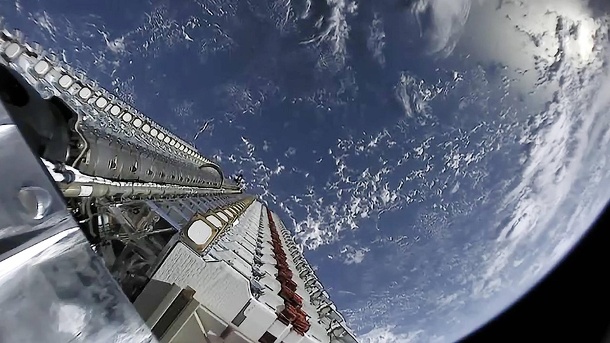
The earth is no longer enough. US companies are planning huge satellite constellations to move telecommunications into space. The domestic space industry wants to profit.
The rapid growth of global traffic will, according to the space industry, lead to a space boom. Experts expect that the transmission of the Internet, telephone and other data will be relocated in part to near-earth orbits. From the huge satellite constellations, which are usually planned by US companies, European and German companies hope for good business.
“The previous range is no longer enough”
“The space business will grow tremendously, not only space but also financial people,” says Bulent Altan, board member of Mynaric, a startup specializing in laser communication in space and aviation in the Upper Bavarian town of Gilching. The US investment bank Morgan Stanley estimates that the space industry worldwide could triple its sales by 2040 to one trillion dollars. “The most significant short- and medium-term opportunities for broadband internet access could be satellite,” says a recent study.
“The previous range is no longer enough,” says Carsten Borowy, manager at the satellite manufacturer OHB in Bremen. “So the idea comes to supplement the approximately 300 geostationary satellites with constellations of smaller near-Earth satellites – an innovation boost in aerospace that we see as very positive.”
A constellation is a group of satellites that all serve the same purpose. Near-Earth satellites – known in the jargon as LEO (low earth orbit) – orbit our planet at an altitude of less than 2,000 kilometers.
Millions of channels are needed worldwide
The company SpaceX of the electric car pioneer Elon Musk wants to shoot more than 10,000 satellites into orbit. Airbus is involved in the OneWeb project, which plans a constellation of nearly 2,000 satellites. Amazon and Facebook are working on their own projects, besides there are other projects.
“In the past, satellite communications was TV broadcasting,” says Borowy, who heads the telecoms satellite programs at OHB. “A satellite transmits a program to millions of households at a given time, and with the advances in digitalization and streaming services, that’s not enough.”
Youtube , Netflix , Maxdome and Co. are helping to increase bandwidth demand: “Worldwide, you need millions of channels, not just 300,” says Borowy. “The spectrum of telecoms satellites is changing towards Internet-based services.”
Data transmission by laser beam
Mynaric board member Altan also sees this as follows: “Space companies are becoming telecom companies, because the majority of these satellite constellations are intended for data transmission.” The aerospace engineer was formerly involved with SpaceX in a leading position in missile development.
Mynaric hopes that laser-beam data transmission will be a shining business, as it is faster than wireless and offers greater transmission capacity. “We are like an Olympic team preparing for the Olympics,” says Altan.
Near-Earth satellites are smaller, lighter, and cheaper than geostationary ones. Airbus and OneWeb recently inaugurated a satellite factory in Florida. In the first phase OneWeb wants to shoot 650 satellites into space. The first rocket launch with about 30 satellites is scheduled for the end of the year, as an Airbus spokesman in Toulouse says. Thereafter, every 30 weeks, 30 more satellites will follow each.
“After the telecom satellites, there will be a new wave of Earth observation satellites,” predicts Mynaric board member Altan. “Because they are inconceivable without telecom satellites, because they depend on the data transfer.”
Real-time observation of the earth possible in the future
In the future, this will make a real-time observation of the earth possible, says the aerospace engineer – “for agriculture, but also when it comes to deforestation, overfishing on the oceans, glacial meltdown or forest fires.If you have a forest fire, it makes a difference this one hour sooner or later is discovered. “
The European top dog thinks in a similar way: “In fact, Airbus sees the beginning of a new market,” says the spokesman. In terms of earth observation, Europe is, according to OHB manager Borowy lead: “We have in Europe with Copernicus world’s most powerful satellite fleet for Earth observation.” Copernicus is a little-known EU project.
In the meantime, observation satellites transmit a multitude of measured data, such as the chlorophyll content of the oceans, which is important for the formation of oxygen. “You can use ultra-small satellites that weigh only a few tens of kilograms, but have only one system on board,” says Borowy.
Europe has “very innovative ideas”
Constellations with thousands of satellites are still a dream of the future. “Building a satellite constellation is very expensive, which costs billions of dollars,” says Borowy. “The risk is extremely high.” But the development is in progress. “I do not think there will be any announced satellite constellations in the end,” says Mynaric board member Altan. “But there will definitely be big constellations, and pretty soon.”
However, plans for a major European satellite constellation are missing so far. “Europe is lagging behind when it comes to the big picture, but we have very innovative ideas in Europe,” says OHB manager Borowy.

